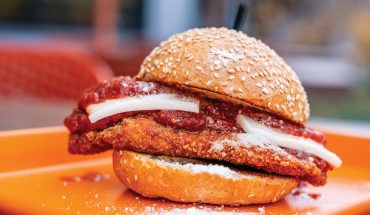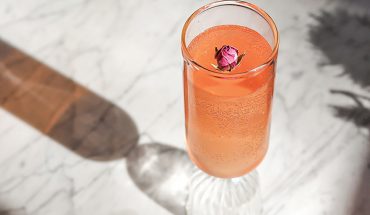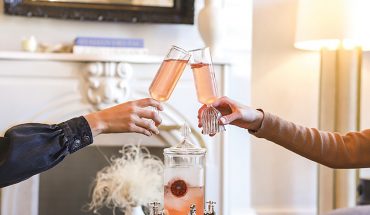by Kevin Barrett
In 2012, I decided to quit my job and head out on the road to a place we Americans refer to as South America. It was just me and my trusty sidekick Oscar. Oscar is a fat, happy black lab that goes most places with me. He and I ended up in Buenos Aires, Argentina, where we soaked up the culture, the food, the drink, and the language for six months. Well, Oscar soaked up the language. He still barks in Spanish sometimes. My Spanish, however, is still pretty malo. That means bad.
It was still primary season in the last U.S. presidential election cycle, and that was enough to nudge me out of the country and away from the sound bites. I was already tired of listening to President Obama defend his broken promises of hope and wearied of hearing Newt Gingrich say anything ever.
Oscar and I were away from March until September. The first three months we frolicked through the five-hundred-and-something-year-old city of nearly 4 million people, but sometime in July I decided to put my one skill to work at a local bar. It was called El Alamo, but I called it The El Alamo. They branded it as an American bar. It was open until 4 a.m., there were TVs everywhere, and the ladies drank Quilmes beer for free until 10 p.m., 11 p.m. or midnight, depending on the day of the week. There’s a lot more to tell about this bar, but TVs and Quilmes beer for the ladies is all you need to know for this month.
The Argentinians, at least the porteños (literally, people of the port, or locals), seemed to really focus on just one or two things that they liked in the categories of food and drink. They liked Quilmes beer, sipped on their beloved Malbec wine, and drank Fernet Branca and Coke by the liter. (Don’t worry, I still don’t know what a liter is, either.) They loved to eat delectable Argentine beef, empanadas, and some pasta dishes that were carryovers from their Italian heritage.
Now I can be the same way. I like to drink bourbon and cocktails made of such, but Argentina had just enacted some strict import laws. Unfortunately, acquiring my cherished American liquor proved difficult, but limitation breeds innovation.
Oscar and I decided to have a party at our Palermo apartment. This was after a couple of months of getting to know people. The party was more like a U.N. meeting. There were Argentinians, Uruguayans, Germans, Spaniards, Brits, Canadians, Brazilians, Greeks, and, my favorite, lots of Colombians.
I figured it would be best to make a punch, but what to use? More importantly, what to name it? I was tired of pouring Fernet and Cokes at The El Alamo and most Argentinian brands of whiskey were…well, let’s just say, not to my liking. The gin selection, however, was abundant. Suddenly, a list of ingredients for a gin punch was stirring in my mind.
The punch is pretty simple to make, and I promise it will satisfy your guests if they’re from any of the aforementioned countries. We decided to call it Palermo Punch in honor of the neighborhood that treated us so well, and it ended up being the first of many batches because there were, of course, many parties.
1 fifth your favorite gin
12 ounces lime juice
6 ounces Cointreau
3 to 4 lemons
¾ cup sugar
1 teaspoon Reagan’s Orange bitters
3 pints water
Serves 1-6 people
(I don’t know how much you drink)
Makes at least 12 drinks
I like to start preparing a punch the night before a get-together. The first step is to make oleo saccharum. I promise this is the only “complicated” part.
Peel the lemons with a vegetable peeler and place the peels, large and small, in a large mixing bowl. Gently muddle to express the oils. If you don’t have a muddler use a wooden spoon, a broomstick, meat tenderizer, or your fist. Next grab some sugar. There are more accomplished men and women than I who recommend 2 tablespoons of sugar per lemon. That’s a good basis to use, but usually when I have a bowl full of lemon peels, Def Leppard speaks to me, and I just pour some sugar on them until they’re covered. Mix the contents in the bowl to coat the zest. Now sit back and relax. The hard work is over. Sort of.
Peek in on your creation every once in a while if you like. You’ll see the sugar and the lemon oil comingling in the bottom of the bowl. If you wait long enough the sugar will completely liquefy and you will be left with a magical citrus sweetener. I let it sit covered at room temperature overnight, but if you have to rush, some people think you only need 30 to 60 minutes. I am not one of those people. In my experience, four hours is the minimum.
Now take your elixir and add 12 ounces of hot water and stir. You can strain out the lemon zest at this point if you want, but I like to leave it in the punch. Pour the contents into a six-quart container along with one bottle of your favorite gin. I used Beefeater in Buenos Aires because the grocery store had a buy-one-get-one-free special on it, and it’s good. Imagine that, North Carolina, buying booze at the grocery store and it’s buy-one, get-one-free. Oh, I miss you, Argentina.
Stir in the remaining ingredients. Add more water if the punch packs too much punch. I really wrote that. Pour into your finest punch bowl and serve over ice.





